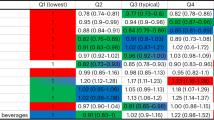Abstract
THE biological behaviour of 137Cs is important in measuring the dose received by the general population from fallout as well as that received by an individual from a specific uptake. Estimates of biological half-life1–4 differ because only small population groups were studied. A correlation between 137Cs concentrations (with respect to K) in milk and in the body indicates that 137Cs in children between 5 and 11 has a much shorter biological half-life5.  This article reports a four-year study to determine the biological behaviour of 137Cs in 110 people representing a cross-section of the general population. The study population was grouped as shown in Table 1. The content of 137Cs in the body was measured in the whole body counter at the Savannah River Laboratory. Adults were counted monthly; adolescents and children were counted every other month. A urine sample was collected from each subject within several days after their whole body count and analysed for 137Cs and 40K. The combined body counts and analysis of the urine provided a material balance between assimilation, retention and excretion of 137Cs. To provide a common denominator and eliminate the inconvenience of obtaining 24-h urine samples, 137Cs content is expressed per g of potassium, a chemically similar element.
This article reports a four-year study to determine the biological behaviour of 137Cs in 110 people representing a cross-section of the general population. The study population was grouped as shown in Table 1. The content of 137Cs in the body was measured in the whole body counter at the Savannah River Laboratory. Adults were counted monthly; adolescents and children were counted every other month. A urine sample was collected from each subject within several days after their whole body count and analysed for 137Cs and 40K. The combined body counts and analysis of the urine provided a material balance between assimilation, retention and excretion of 137Cs. To provide a common denominator and eliminate the inconvenience of obtaining 24-h urine samples, 137Cs content is expressed per g of potassium, a chemically similar element.
This is a preview of subscription content, access via your institution
Access options
Subscribe to this journal
Receive 51 print issues and online access
$199.00 per year
only $3.90 per issue
Buy this article
- Purchase on Springer Link
- Instant access to full article PDF
Prices may be subject to local taxes which are calculated during checkout
Similar content being viewed by others
References
Rundo, J., and Taylor, B. T., The Assessment of Radioactive Caesium in Man Symposium on Assessment of Radioactive Body Burdens in Man, Heidelberg, Germany, 1964, Publ. SM-52/6 (1964).
Anderson, E. C., Schuch, R. L., Fisher, W. R., and Langham, W. H., Science, 125, 1273 (1957).
Miettenen, J. K., Jokelainen, A., Roine, P., Liden, K., and Naversten, Y., Ann. Acad. Sci. Fennicae, Series A, II, Chem. (1963).
Rundo, J. A., Brit. J. Radiol., 37, 108 (1964).
Boni, A. L., Health Phys., 12, 501 (1966).
Palmer, H. E., Radiological Physics, Hanford Radiological Sciences Research and Development Annual Report, 1964, Publ. BNWL-36 11, 2.4 (Battelle Northwest Laboratory, Richland, Washington, 1965.)
Onstead, C. O., Oberhausen, E., and Keary, F. V., Science, 137, 508 (1962).
McCraw, T. F., Radiol. Health Data, 6, 711 (1965).
Author information
Authors and Affiliations
Rights and permissions
About this article
Cite this article
BONI, A. Variations in the Retention and Excretion of 137Cs with Age and Sex. Nature 222, 1188–1189 (1969). https://doi.org/10.1038/2221188a0
Received:
Revised:
Issue Date:
DOI: https://doi.org/10.1038/2221188a0
This article is cited by
Comments
By submitting a comment you agree to abide by our Terms and Community Guidelines. If you find something abusive or that does not comply with our terms or guidelines please flag it as inappropriate.



